Quartz Deformation
| Quartz. In the
weakly deformed core of the structure, quartz in not internally
deformed or recrystallized, it is simply cracked, and the cracks are
filled by sericite (Fig. 6 above). In contrast, as the overprinting
deformation increases, quartz becomes a) undulose, changes shape and
defines S-C fabric and fold hinges. In this stage,
the sericite-filled cracks are still preserved. c) Quartz is
recrystallized, and has higher aspect ratio. All the photomicrographs are at the same scale (field of view is 2mm across) and can be directly compared. |
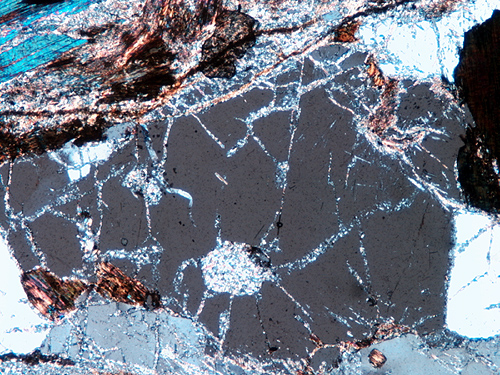 Figure 1a. Sample ES1C. Cracked quartz grain but undeformed internally. Cracks filled with sericite. This is a typical example of quartz grains in this sample, with typically equant sizes, 2mm in diameter. |
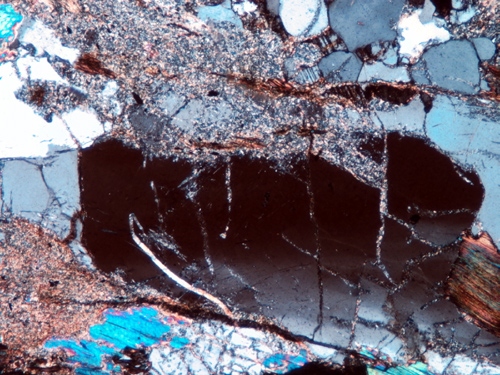 Figure 1b. Cracked quartz grain showing also undulose extinction. Less typical. |
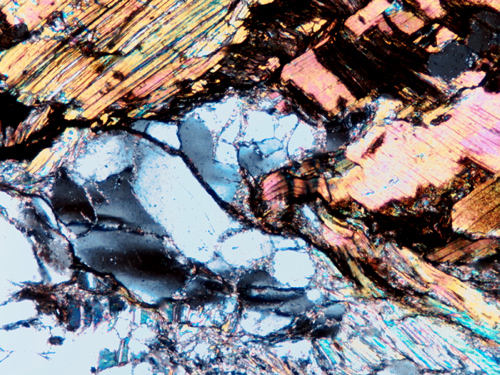 Figure 2a. OVERPRINTED Sample EC04_3. Folded quartz grains with undulose extinction and defining a fold hinge, also defined by biotite. |
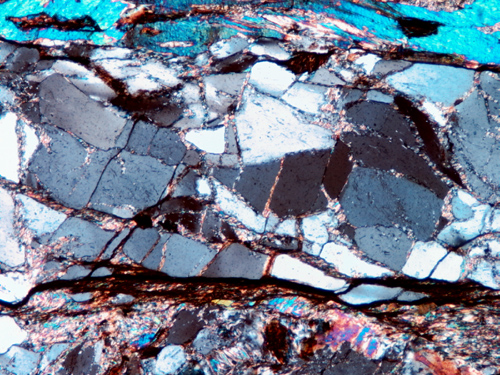 Figure 2b. OVERPRINTED Sample Ec04_4. Stretched, Recrystallized and cracked quartz grains defining an incipient S-C fabric. Note sericite-filled cracks. |
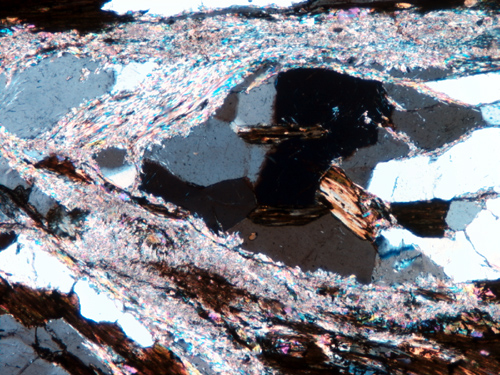 Figure 3a. TRANSPOSED Sample EC04_2. Folded quartz grains recrystallized. also defined by biotite. |
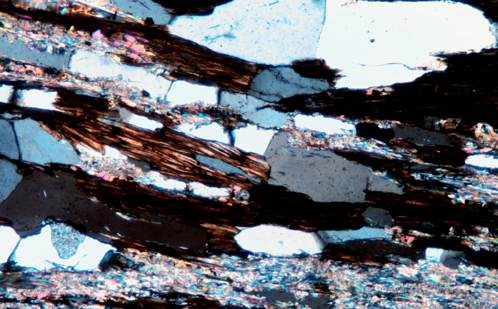 Figure 3b. TRANSPOSED Sample EC04_2. Recrystallized quartz on limb of new folds developed during transposition of the earlier foliation. Aspect ratios typically between 8 for large grains (1mm long), and 1 for small recrystallized grains (0.1-0.2 mm in diameter). |